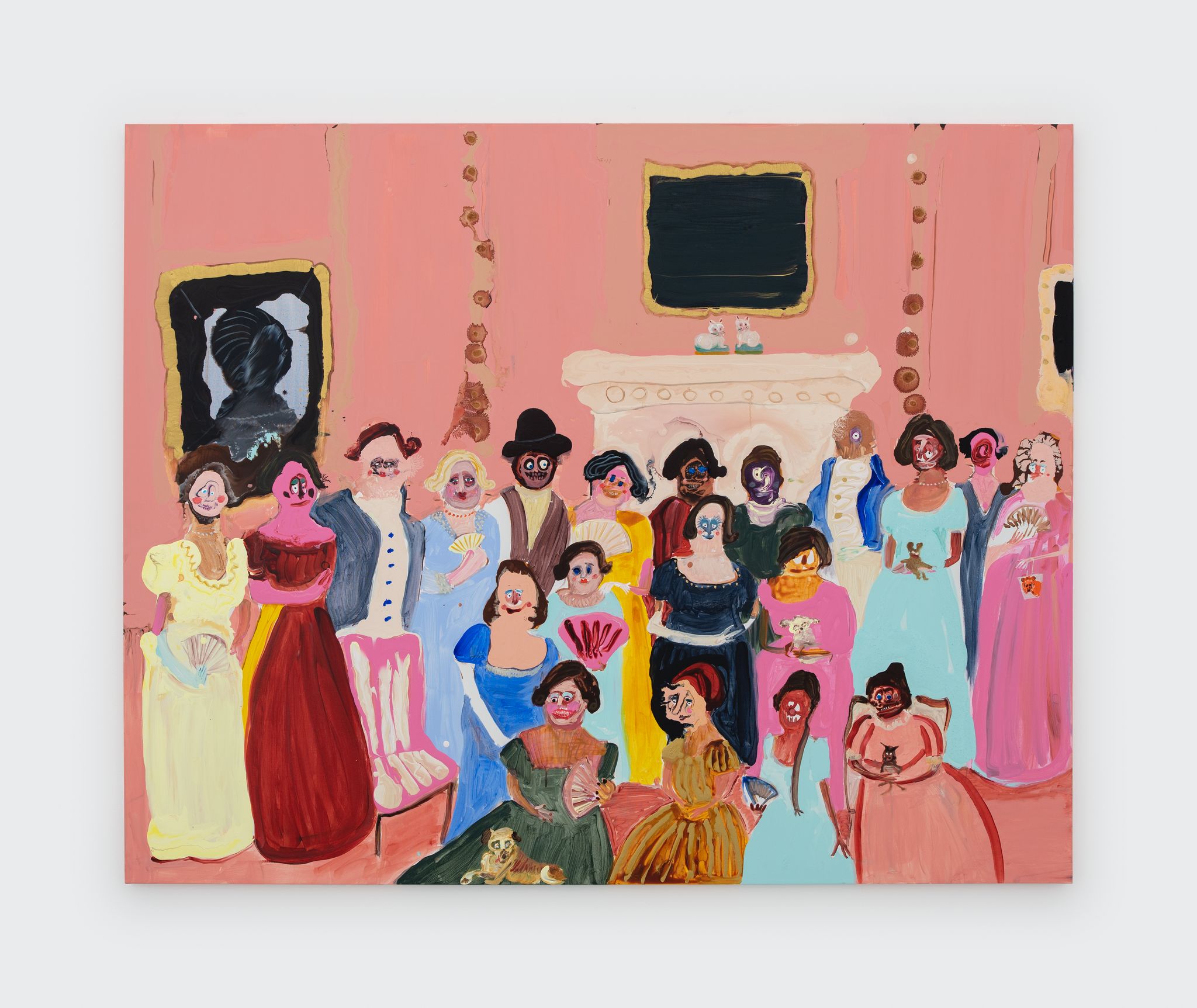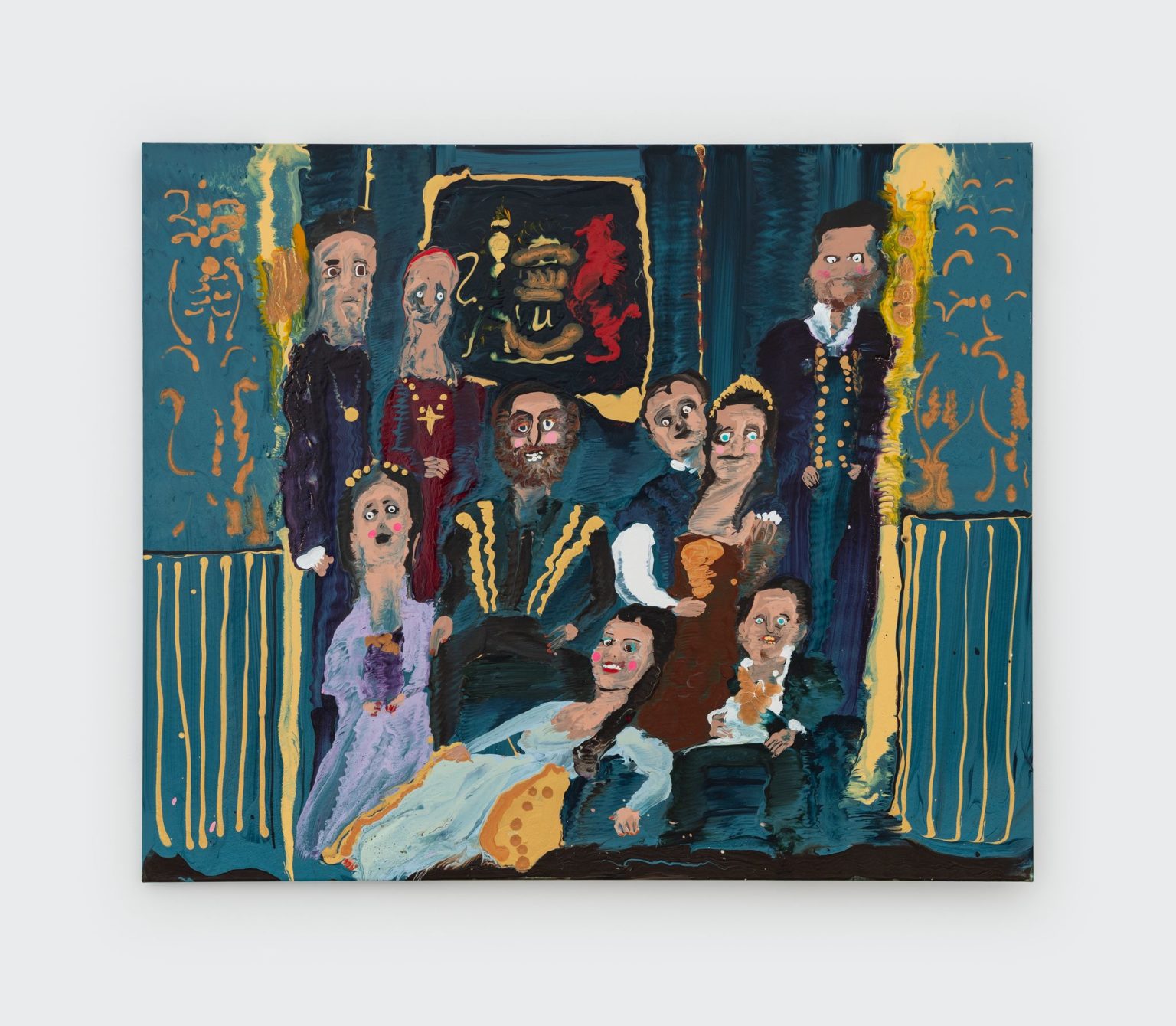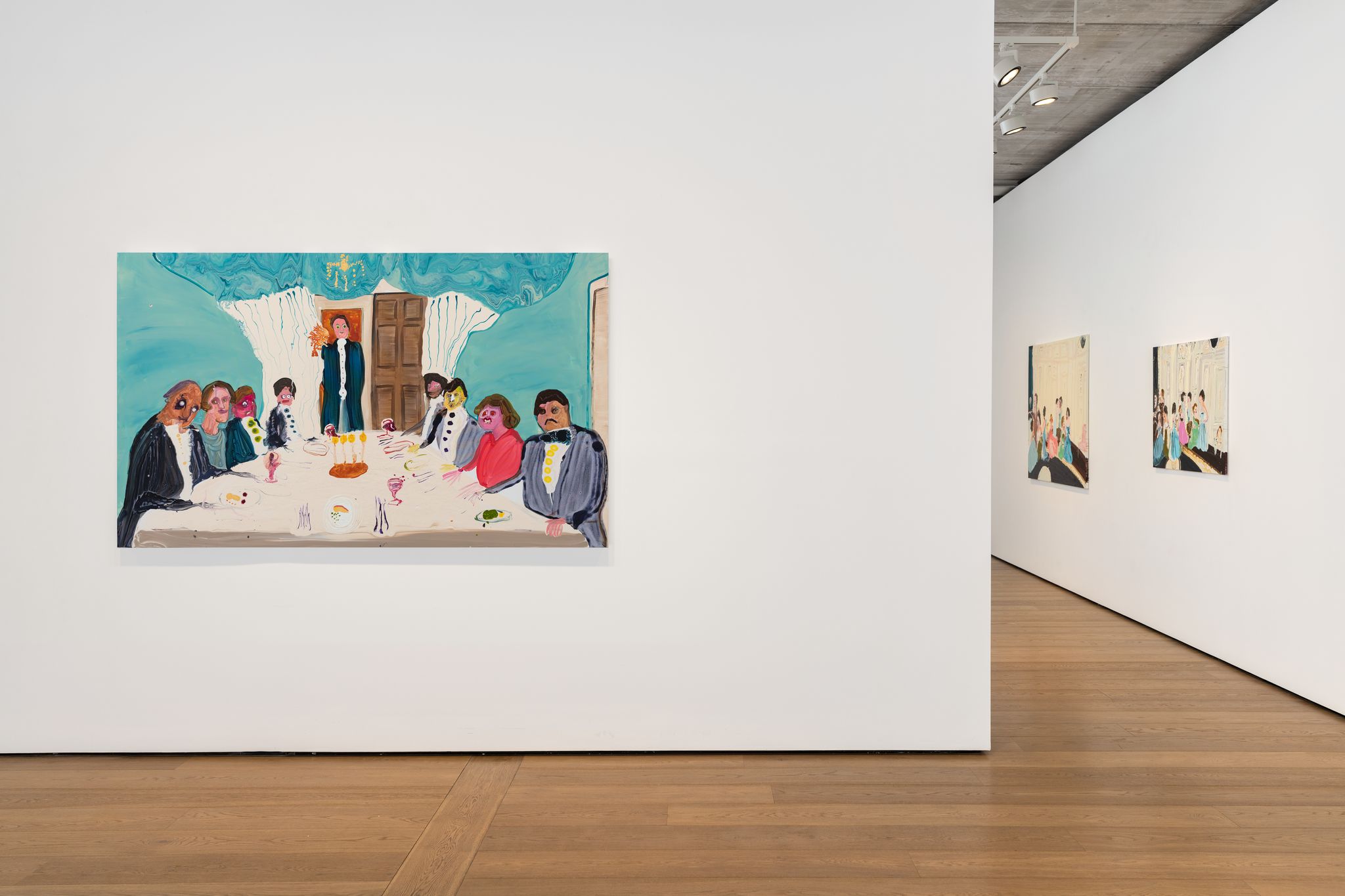
“In our history books, the Irish were a suffering nation,” the painter Genieve Figgis tells me. Born in Dublin in 1972, Figgis grew up with the fervour of the Catholic faith and the Irish perspective on European history, all of which continue to inform her work to this day. “My characters are always about survival. I paint people who are strong and colourful. I try to depict a universal world of exclusion. The figures are happy, mostly floating in some utopian stage of equality.”
It is impossible to view Figgis’ work and not be struck by the unsettling eyes of her figures—often bulging, blurred out or droopily languid—or by the absurdity of their wide and toothy smiles. But what one might take as ghastly and disturbing, Figgis views as simple and instinctive. Figgis’ paintings are a result of a practice that is by now, as she puts it, on “auto-pilot”—not intentionally macabre but, rather, inspired by her exposure while growing up to emotive ecclesiastical iconography in Catholic Ireland in the 1980s. “The horror of Jesus on the cross that we were all made to look at, the martyrdom and sacrifice of the priests and nuns, and the hero-worship of bishops and popes all fell into my imagination”, says Figgis.

“My characters are always about survival. The figures are happy, mostly floating in some utopian stage of equality”
Figgis spent lockdown producing her latest body of work, Imaginary Friends, composed of 21 new works, which were exhibited at Almine Rech’s London gallery at the end of 2020. Part escapism from the present, part commentary on the past, the artist worked somewhat like a historian, taking the dramas and documentaries she had watched, magazines and old photographs, Google images and fashion books, and translating them into works using her characteristic style of ghoulish social portraiture. As the world was navigating the “new normal”, Figgis was creating her own social bubble with paint: “As I made this work, I found these figures slowly surrounding me and the faces became my only companions,” she explains. “Art is a coping mechanism. It allows me to process what is going on.”

Figgis’ signature style of figuration is potentially the most intriguing aspect of her work, with heavy-laden, half-mixed paints swathed over the scenes that she depicts. Using a technique of wet-on-wet with acrylic paints, the artist is able to create bold, melting abstractions and flowing blurs between her figures and their surroundings. Typically concerned with both historical and contemporary aristocracy, she renders her scenes clearly and with an indelible intricacy. Imaginary Friends conflates a pining for our recent past with a journey further back to bygone times of grand ballrooms and elaborate place settings: from the gilded, medieval halls of the Tudors to the decadent Russian courts of Catherine the Great and even the fictional halls of Gosford Park, with echoes of Rococo and Baroque.
An artist with a compelling force of imagination, Figgis’ process of obscuration is, in fact, an invitation to the viewer to engage more; to read the social dynamisms between her characters; to decipher the mood of the scenes; to communicate with her figures, and even form friendships and animosities. Dinner (2020) places the viewer in the position of dinner guest at the head of the table, flanked on either side by a medley of faces of varied hues and emotion, each presenting a new, potential narrative to read. Imaginary Friends offers a particularly playful rendering of faces: often primitive, alien or wholly incomplete. Waiting (2020) depicts a party of people congregated on the steps of a grand building; from the fray of their half-finished faces, a figure on the left emerges, rendered entirely in white with sketch lines exposed—the shape of someone absent.

“As I made this work, I found these figures slowly surrounding me and the faces became my only companions”
Figgis’ new series, Imaginary Friends, is unique in the colour, pomp and vibrancy that is less present in her previous works. Social portrait (2020), for example, is more an exercise in pastels than a work of great detail. Swirls of faces peer through flamboyant costumes of pink and purple and orange that are so lightly painted that they almost look like watercolour; Figgis’ use of colour conjures an immediacy and sense of longing for the chaos and noise of social scenes that have become so inaccessible to us. Keep Smiling (2020), the only work in the series to feature a solitary figure, captures the sentiment best: it features a lady adorned in a pink dress and matching hat, staring out of the portrait, wine glass clasped in both hands. The room she is stood in appears somewhat simpler than some of Figgis’s other scenes, with faintly implied features and a swill of blood-red on the floor beneath her. Her eyes are garishly alert and encircled in blue eyeshadow, her teeth bared in a dramatic grin that is determined, desperate and deranged.
As Alison M Gingeras writes on Figgis: “Humans are resolutely social animals. Yet it takes an unprecedented global pandemic—with its attendant dictates to keep our distance from others—for us to acknowledge our primordial need for group belonging.” We may try not to identify with Figgis’ crew of characters, but she expertly conveys this inescapable need in us.




